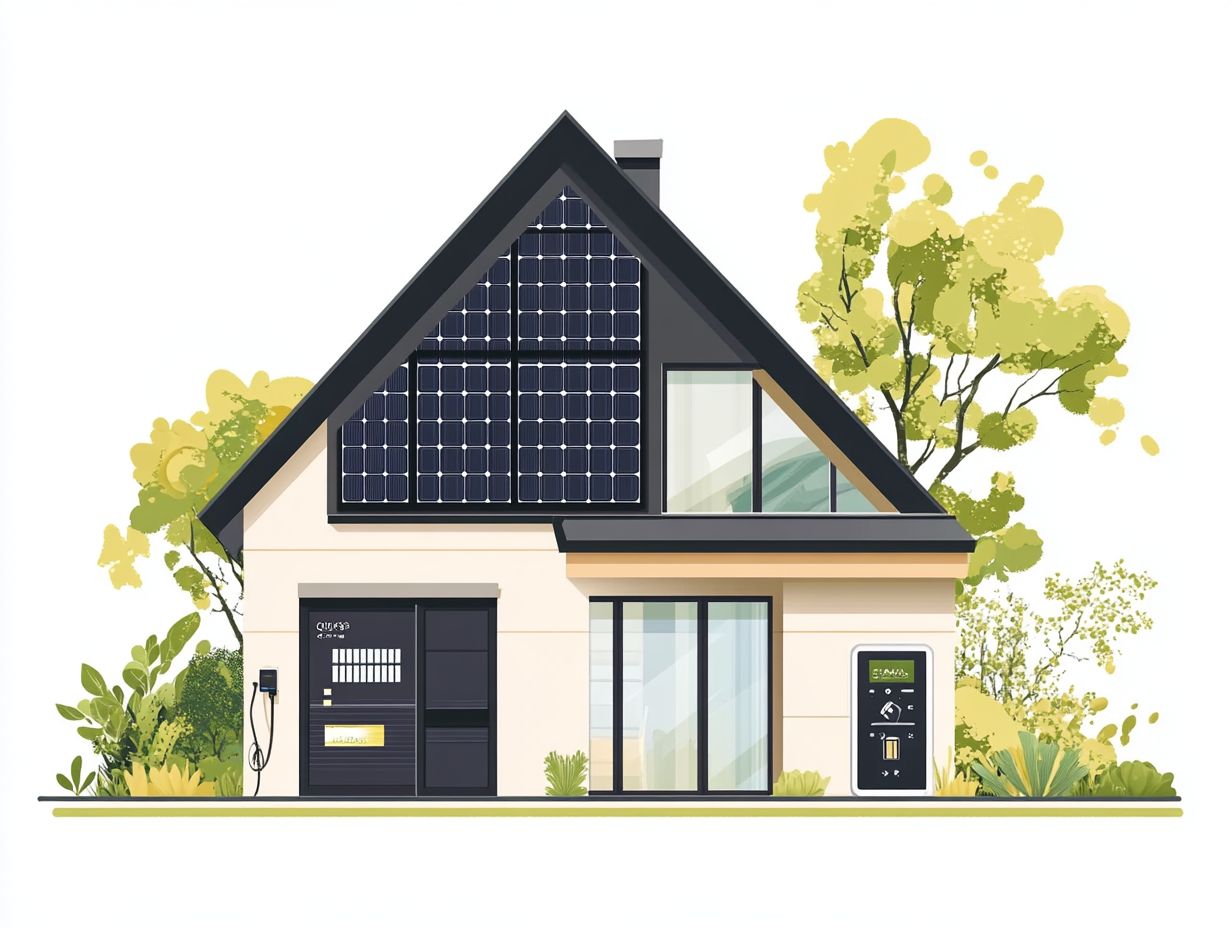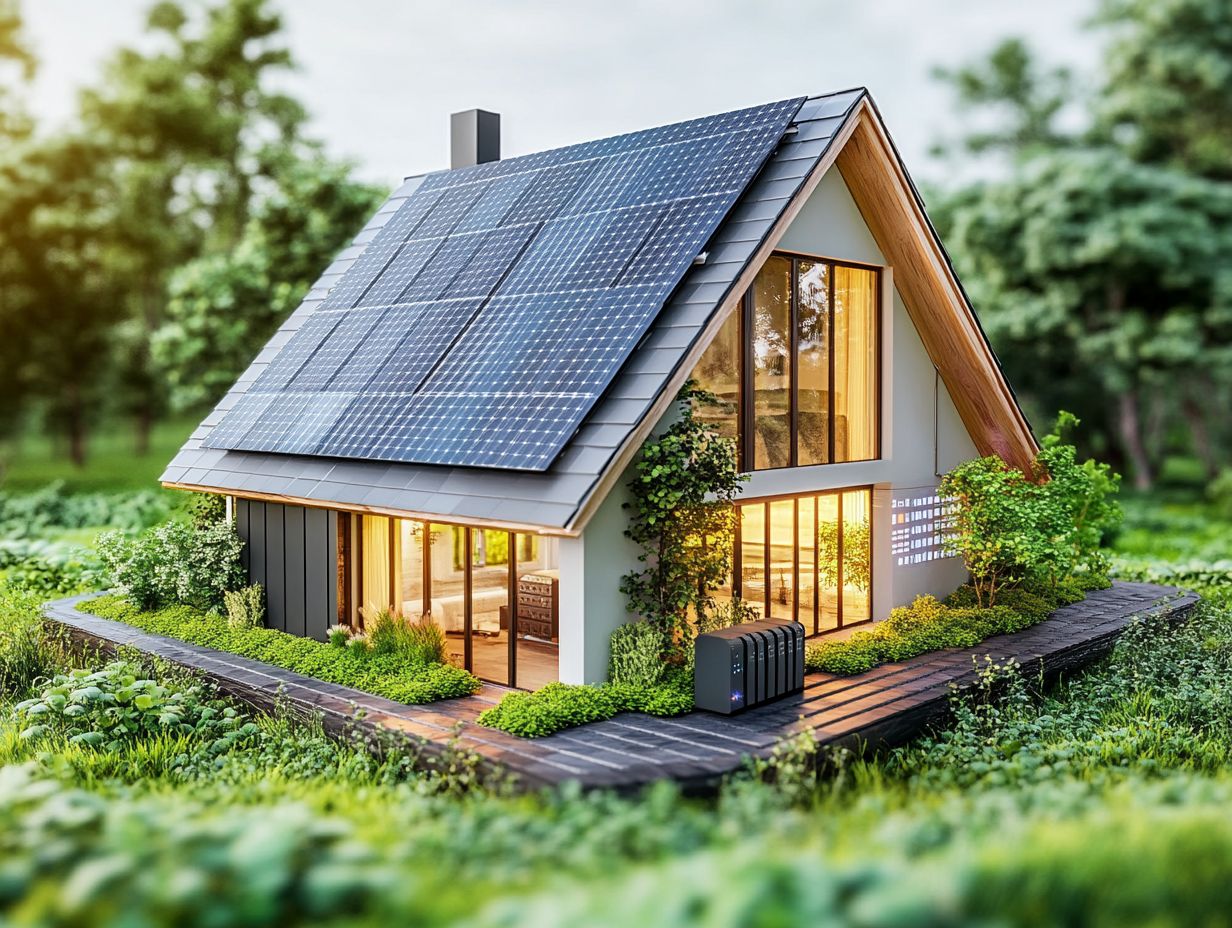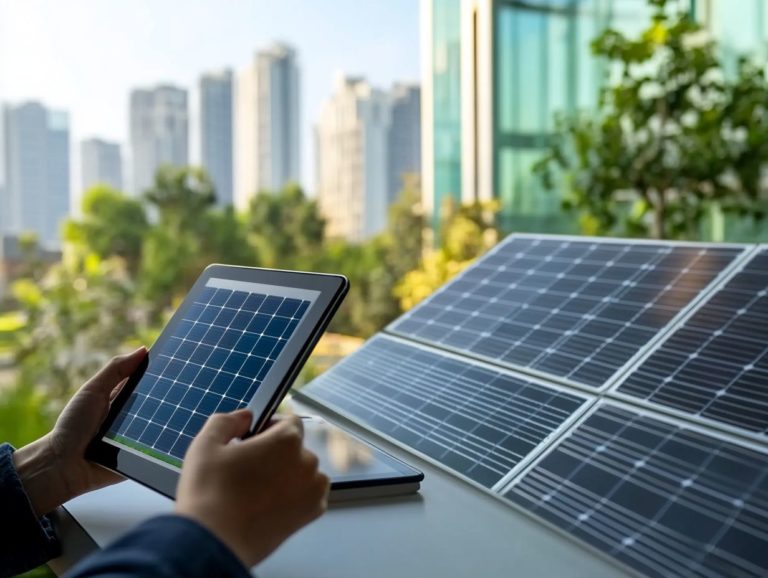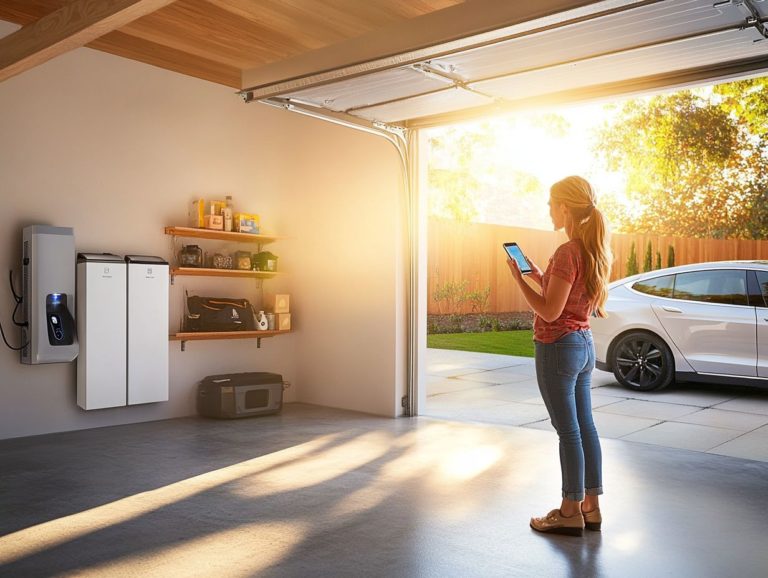How Energy Storage Can Reduce Your Electricity Bill
Energy storage systems are essential for sustainable energy solutions. They efficiently store and manage energy, which can lead to significant savings on electricity bills.
This article explores energy storage basics, including various types like batteries and pumped hydro systems. You’ll discover the benefits these systems provide.
Through real-life case studies, you’ll see how energy storage can transform energy usage.
Contents
Key Takeaways:

- Energy storage systems can cut your electricity bill by storing energy during off-peak hours for use during peak hours.
- These systems improve energy efficiency by reducing the stress on the grid and minimizing the need for additional power plants.
- The most common types include batteries, flywheels, and pumped hydroelectric storage, each offering unique advantages.
The Basics of Energy Storage
Understanding energy storage is crucial for homeowners and businesses pursuing sustainable solutions. Home energy storage, like lithium-ion batteries, helps manage energy from renewable sources such as solar power.
These systems enhance energy efficiency and lessen reliance on utility companies, which can lead to significant financial benefits.
By investing in energy storage, you boost grid stability and achieve energy independence, all while supporting a cleaner environment.
Understanding Energy Storage Systems
Energy storage systems let you capture and store energy for later use. This optimizes energy management in your home or business.
These systems feature technologies like lithium-ion batteries, pumped hydro storage, and flywheels. They harness energy during peak production times, like sunny afternoons, and release it when demand is high.
The Tesla Powerwall is a popular choice for homeowners, allowing them to store solar energy for evening use. The efficiency of these systems depends on battery capacity, which determines how much energy you can keep for later.
Utility incentives also promote the adoption of these technologies, making energy management achievable for many consumers.
Benefits of Energy Storage
The advantages of energy storage systems extend beyond just cutting electricity bills. They provide financial benefits while enhancing energy independence and security.
Reducing Electricity Bills
One major benefit of energy storage systems is their ability to lower your electricity bills. They allow you to store energy during off-peak times when rates are lower and use it when demand and costs are high.
This approach can lead to significant savings while improving energy efficiency. By wisely storing and using energy, you can reduce demand charges imposed by utility companies during peak usage, contributing to the environmental benefits of energy storage.
Effectively managing these charges enhances your overall energy savings, helping you enjoy lower bills while contributing to a more sustainable energy future.
Improving Energy Efficiency

Improving energy efficiency is one standout benefit of energy storage systems. These systems help you manage energy more intelligently and maximize solar energy and other renewable resources.
They help balance supply and demand and enhance grid stability by storing excess energy produced during peak times for later use. This smart management results in significant cost savings and a remarkable reduction in waste.
To optimize the performance of your energy storage systems, effective energy management solutions are essential. These solutions help you use energy at the most advantageous times.
Regular maintenance is key to keeping both storage and management systems operating smoothly over the long haul.
This diligent care extends the lifespan of your systems and enhances the overall reliability of your energy infrastructure.
Types of Energy Storage Systems
Energy storage systems come in various types, each utilizing distinct technologies to store and release energy effectively. This diversity makes them well-suited for a variety of applications tailored to meet specific user needs.
Batteries
Batteries, particularly lithium-ion batteries, are among the most common energy storage technologies today. They provide efficient and reliable backup solutions for homes and businesses.
These sophisticated batteries utilize a process that involves lithium ions and electrodes to store and release energy. This makes them more efficient than traditional lead-acid batteries.
The high energy density of lithium-ion cells allows for sleek, compact designs, enabling them to store more power in smaller, lighter units. This makes them the preferred choice for backup power during outages, ensuring your critical devices remain operational.
Unlike nickel-cadmium batteries, which suffer from memory effects and reduced efficiency, lithium-ion batteries excel with their superior longevity and rapid charging capabilities.
This highlights their essential role in contemporary energy strategies, giving you peace of mind and the reliability you need.
Flywheels
Flywheels are an exciting energy storage technology, known for their ability to charge and discharge energy with impressive speed. This makes them ideal for applications that require quick response times.
These devices use spinning energy to work quickly, ensuring high efficiency while minimizing energy loss over time. Their durability sets them apart, as they can endure countless charge and discharge cycles without significant degradation.
This reliable performance leads to cost-effective energy storage solutions, suitable for diverse scenarios from smoothing out power supply fluctuations in commercial sectors to providing backup power for homes.
As the demand for energy efficiency skyrockets, integrating flywheel technology is becoming a compelling choice for many.
Pumped Hydroelectric Storage
Pumped hydroelectric storage is one of the most venerable and reliable energy storage systems. It harnesses gravitational potential energy to store and release energy exactly when it’s needed for grid stability.
During low electricity demand, water is pumped to a higher elevation, only to be released later to generate hydroelectric power when energy needs peak. This technology functions like a massive battery, effectively managing the ebb and flow of supply and demand.
It plays a pivotal role in enhancing grid reliability and resilience, especially as more renewable energy sources come into play. The ability to quickly adjust output transforms it into an invaluable asset for operators, ensuring a balanced and stable energy system that can accommodate variable generation patterns.
Explore these energy storage options today and take the first step toward a smarter energy future!
How to Implement Energy Storage

Implementing energy storage systems requires a careful approach. You must consider various factors to guarantee optimal performance. This is essential whether you are focusing on residential settings or tackling larger commercial applications.
Aligning these systems with your energy goals is crucial for achieving the best results.
Key Considerations for Energy Storage
When planning for energy storage implementation, several critical factors deserve your attention:
- Assessing your energy needs
- Determining system capacity
- Understanding maintenance requirements
This process involves a thorough analysis of your current and future energy consumption patterns. It helps create a more precise alignment between supply and demand.
Evaluating anticipated financial benefits like reduced energy bills and overall return on investment is vital for your decision-making. Explore potential government incentives or rebates. These can significantly enhance the feasibility and affordability of your project.
By carefully addressing these aspects during the planning phase, you can ensure a more effective energy storage solution that truly aligns with your long-term goals.
Case Studies on Energy Storage Technologies
Examining case studies on energy storage offers invaluable insights into real-world examples of successful implementations. These instances highlight financial advantages and demonstrate significant improvements in the reliability of electricity supply.
Real-Life Examples of Energy Storage Implementation
Real-life examples often showcase innovative solutions like the Tesla Powerwall. This device stands as a benchmark for effective energy management and efficiency savings for homeowners.
It allows you to store excess energy from your solar panel systems or the grid. This lets you capitalize on energy during peak demand hours when prices surge. Users are thrilled to see their monthly bills drop significantly, with some claiming savings exceeding 30%.
Homes equipped with energy storage systems face fewer power outages and enjoy greater energy independence. This contributes to energy security and a resilient energy management solution.
Testimonials from satisfied customers frequently highlight how the Powerwall has boosted their energy efficiency. It offers peace of mind during emergencies by providing a reliable backup power supply. This illustrates the transformative impact of such technology on everyday living.
Frequently Asked Questions
What is energy storage and how can it reduce my electricity bill?

Energy storage captures and stores energy for later use. By using energy storage systems, you can save energy during off-peak hours when electricity rates are lower and use it during peak hours when rates are higher. This ultimately reduces your electricity bill.
What are the different types of energy storage systems?
There are several types of energy storage systems, including batteries, pumped hydro, compressed air, and thermal energy storage. Each type has unique methods of storing and releasing energy and can help reduce electricity bills in various ways.
How does using a battery for energy storage help reduce my electricity bill?
Batteries are a popular energy storage option for homeowners and businesses. They store energy from renewable sources, such as solar panels, for later use. This reduces reliance on traditional electricity sources and can lead to lower electricity bills over time.
Can energy storage systems be used in combination with renewable energy sources?
Yes! Energy storage systems can be paired with renewable energy sources, such as solar or wind power. They store excess energy for later use, reducing your reliance on traditional electricity sources and ultimately lowering your electricity bill.
Conclusion
Energy storage is vital in achieving energy efficiency and independence. By understanding how these systems work and their benefits, you can make informed decisions that align with your energy goals. Don t miss out on the chance to enhance your energy management solutions!
Are there any government incentives for using energy storage to reduce electricity bills?
Yes! Governments offer various incentives to help you save on electricity bills.
Some states provide tax credits for installing battery systems, and there are federal programs like the Investment Tax Credit, which can lower your tax bill when you use renewable energy.
How do I determine which energy storage system is right for me?
The best battery system for you depends on your energy needs and goals. Consult a professional to assess your energy usage and budget.
They can help you find the perfect solution for your home or business.






